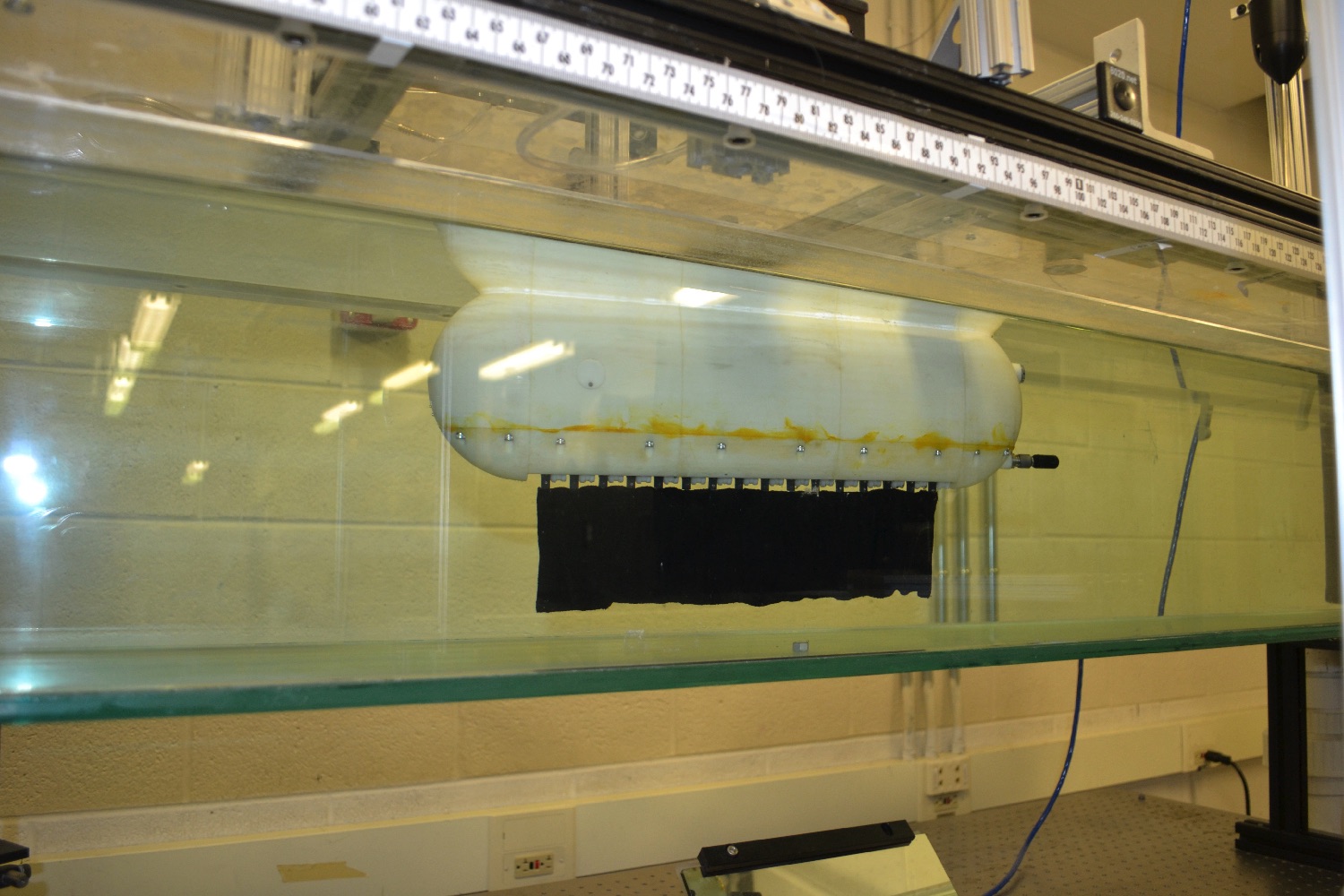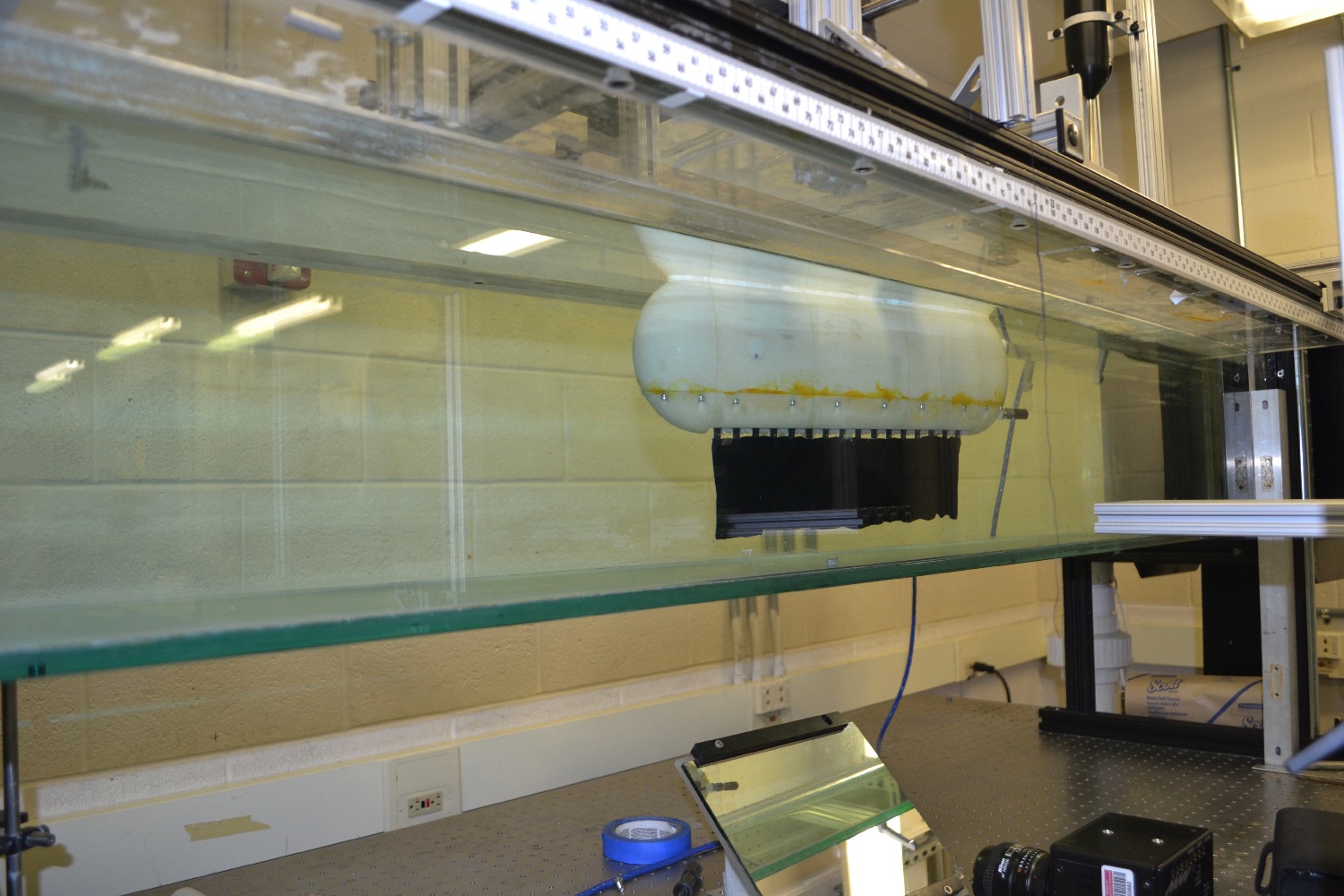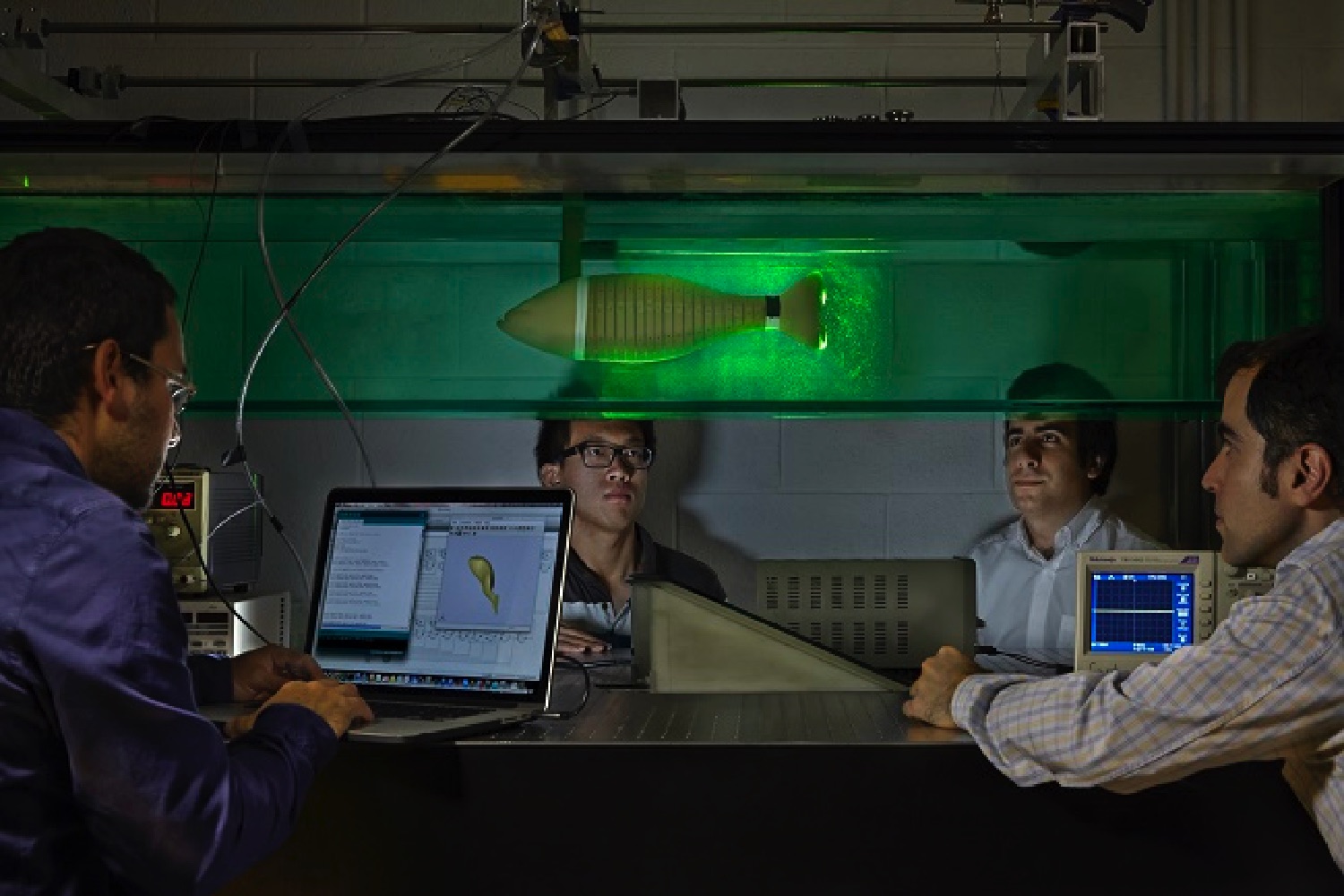Dr. Oscar Curet of the university’s Department of Ocean and Mechanical Engineering has spent the past several years investigating fish-like robots. His latest: a 16-motored robot based on the blade-like knife fish, is one of the most promising yet.
“I’m interested in the fluid dynamics of biosystems,” Curet told Digital Trends. “I believe that the kind of flexible structures we see in many types of animal propulsion can transform the way that robots propel and maneuver. The knife fish has a wide range of capabilities. They have a large fin they can manipulate to move forward, backwards, and otherwise generate a big range of rich motions that aren’t seen in many animals.”
The knife fish bot is not the only project the naval grant will aid. Primarily, it will go toward cutting-edge instrumentation for the 3D observation of underwater-flow dynamics. This system will enable researchers at Florida Atlantic University to better understand how fluid dynamics work in association with bio-inspired flexible propulsors in complex underwater environments.

The result of all this work will hopefully soon be more agile underwater robots.
“It’s true that there hasn’t been as much work with autonomous underwater vehicles and underwater robotics, but it’s an area with huge potential,” Curet said. “There are exciting applications in ocean exploration for surveying the floor of the ocean, for analyzing different pollutants in water, and for inspecting underwater structures like pipelines, sea walls or ships. A lot of these require the ability to navigate complex environments, which is why having a robot which can maneuver and adjust in these conditions is very useful.”
Editors' Recommendations
- U.S. Air Force’s secretive space plane bags prestigious aerospace award
- SpaceX and United Launch Alliance win launch contracts for U.S. Air Force
- U.S. Navy’s robot submarines could carry out autonomous attacks
- The Navy says Tom DeLonge’s UFO videos are real. That doesn’t mean it’s aliens
- Autonomous robot deliveries are coming to 100 university campuses in the U.S.







